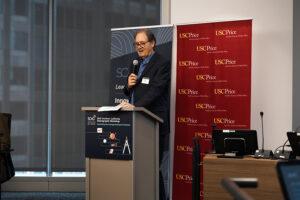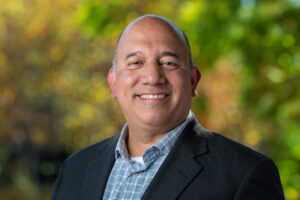One of the biggest obstacles to making Los Angeles Metro a more widely adopted transit system is that riders feel unsafe. According to recent news reports, many riders have steered clear of Metro as the agency grapples with people using drugs and experiencing homelessness, along with far rarer instances of violent crime.
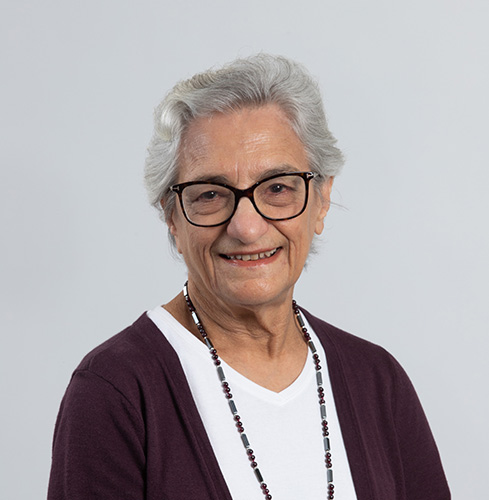
To examine what’s happening on Metro’s system and what can be done to improve safety, the USC Sol Price School of Public Policy hosted a webinar with experts in transit and law enforcement. The event, “Price Presents: Mending Metro,” featured Jim McDonnell, director of the USC Price School’s Safe Communities Institute; Gina Osborn, Metro’s chief safety officer; and Rachel Uranga, transportation and mobility reporter for the Los Angeles Times. The panel was moderated by Genevieve Giuliano, distinguished professor at the USC Price School and an expert on transportation policy.
“Public transportation is a critical part of our sustainable transportation goals in Los Angeles, yet it has been difficult to build up ridership. One challenge is personal safety,” said Giuliano, who is also Margaret and John Ferraro Chair in Effective Local Government.
Metro crime and safety: perception vs. reality
As of 2022, annual ridership was more than 255 million boardings, still below 370 million in 2019, before the COVID-19 pandemic prompted lockdowns and remote schedules for many office workers.
Despite perceptions that riding Metro is dangerous, crime has actually dropped in recent months, Osborn noted. She said crime decreased 53% on the rails in May and fell another 20% in June. Meanwhile, ridership has steadily increased, with monthly weekday ridership averaging 860,000 over the last six months. Taylor Swift’s concerts at SoFi Stadium boosted ridership by 180,000 during the six-day event in the first week of August
Metro has also hired about 300 “transit ambassadors” who assist passengers with buying fares and wayfinding, as well as providing a visible presence on trains and buses.
“We have worked very hard in an effort to make our system safe for not only our riders but for our employees as well,” Osborn said.
However, many riders continue to view the system as unsafe because of what they see when aboard trains or buses.
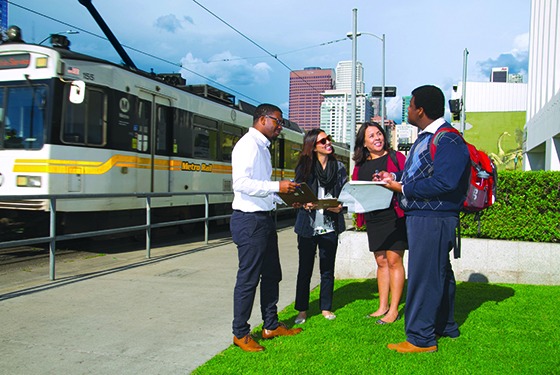
Master of Urban Planning
Make Cities More Just, Livable & Sustainable
USC’s MUP degree trains students to improve the quality of life for urban residents and their communities worldwide.
Find Out More“I think people have a perception that there may be a lot more crime because you’re seeing people who may not have a home, may be unhoused; you’re seeing people who are probably high, and that is not an infrequent experience,” Uranga said, “That creates a sense of insecurity.”

A major takeaway, Giuliano said, is that Metro operates within the fabric of our community. “Ultimately, the crises of homelessness, drug use and mental health are our collective responsibility to solve,” she said.
“When we look at the problems on Metro, and look at the problems on the streets surrounding the Metro system, what happens in one is going to happen in the other,” added McDonnell, a former Los Angeles County sheriff.
A tension over Metro fare enforcement
One way Metro has sought to address these issues is through fare enforcement, Osborn said. The agency didn’t enforce fare collection during the pandemic, and has since worked to re-establish that “if you come into our system, onto our trains or buses, you need to be a destination traveler,” she said.
“We’re working very hard on removing non-destination travelers from our system,” Osborn said, adding that the agency found in January that the vast majority of people arrested did not have proof of fare.

However, that approach could conflict with Mayor Karen Bass’ push for ending fares on Metro to boost ridership. Critics of that proposal say fareless transit would allow more people to use trains and buses as shelter, Uranga noted.
“Obviously, not having a home is not a crime,” Uranga said. “If you can ticket somebody for fare evasion, it’s a way to keep certain people out of the system. So as the mayor moves forward, there’s gonna be this tension about whether we create fareless [transportation] or not.”
A Metro police force?
Another policy proposal is giving Metro its own police force. The agency currently contracts with the Los Angeles Police Department, Long Beach Police Department and Los Angeles County Sheriff’s Department. Critics say these partners haven’t been visible enough on the system.
McDonnell said creating a new force would be a huge and expensive task, especially with recent challenges in police recruitment.
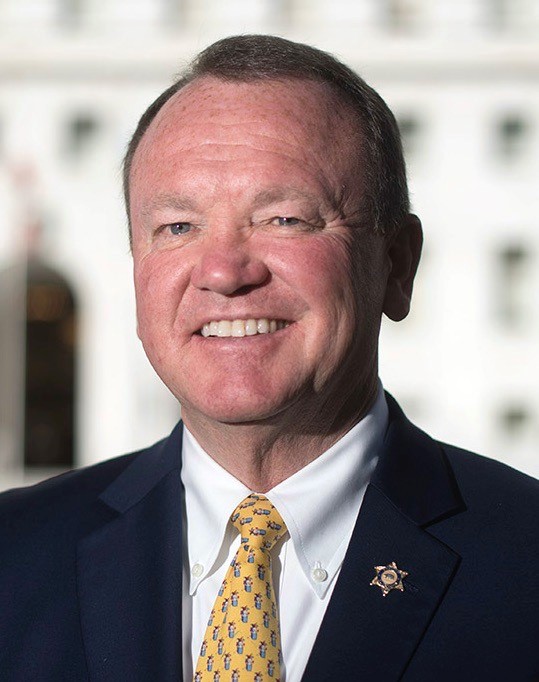
“It’s going to have to be a substitute of substantial size. You’re dealing with salaries, benefits, a communication system, the equipment, the vehicles, the training that goes into that,” McDonnell said. “There’s an awful lot of ramp up time necessary to be able to get all of that in control. There’s a considerable amount of expense in putting together a department like this.”
Some social justice advocates have proposed going in a different direction entirely. They’ve called for Metro to end contracts with police departments and use the money for operations or social services, and rely on law enforcement in emergencies, Uranga said.
McDonnell said it would be unrealistic to rely on immediate response times in such a large system. “Probably well intentioned people [are] voicing their opinions on this,” he said, but they’re “completely uninformed.”
Metro is at a pivotal moment as it looks to expand ridership, and will need to create a safe place for riders to do that, Uranga concluded.
“This is one piece of a larger puzzle that, if Metro is going to be the great transit service that it really aspires to be, it’s going to need to solve,” she said.




